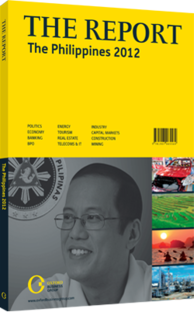OBG talks to Hans Sicat, President, Philippine Stock Exchange (PSE)

Interview: Hans Sicat
What types of measures are being taken to help increase the visibility of the PSE on both domestic and international fronts?
HANS SICAT: In emerging markets like the Philippines, everything has traditionally been of smaller scale and smaller volume. Increasing visibility and therefore liquidity has always been both a goal and a challenge.
The PSE has completed two basic fixes to encourage higher liquidity and increased trading. In 2010 the PSE replaced its existing trading engine with a modern NYSE Euronext one, bringing the PSE in line technologically with other exchanges in the region. Also, the PSE’s two trading locations were consolidated into one.
On the market side, the PSE has been taking steps to expand its product base. One major challenge in increasing volumes is that the PSE is officially a long-only market. We are working with the Securities and Exchange Commission (SEC) to approve securities borrowing and lending, paving the way towards allowing shorting in the market. We are also awaiting approval from the SEC for listing exchange-traded funds.
Regarding listings, the PSE has reinstated minimum public float requirements and signalled further augmentation. To encourage new listings, we have reintroduced a process called “listing by introduction,” essentially a delayed initial public offering. The PSE is also working with the Department of Energy to assist renewable energy companies in listing on the bourse, often the best way for them to raise capital. Additionally, we were recently approved for extended trading hours starting in October 2011, and the landmark decision was made to start afternoon trading in January 2012. This further aligns us with ASEAN neighbours, and may even allow us to catch some European market openings.
Finally, the ASEAN trading link will begin operations in the second quarter of 2012, along with an ASEAN index. This initiative should connect exchanges throughout the region, and will allow the facilitation of increased inter-exchange trading between the markets located in Malaysia, the Philippines, Singapore and Thailand.
What steps are being taken to strengthen good governance and increase trading transparency?
SICAT: Apart from automating the trading platform, we are automating surveillance systems. The PSE is using state-of-the-art software from the Korea Stock Exchange, which will help discourage trading violations, and we have sent a strong signal by delisting non-compliant firms and expelling errant brokers.
We have also asked that regulatory functions overseeing brokers return to the SEC. The broker regulation function has long been rife with potential conflicts of interest. Returning this authority to the SEC not only improves corporate governance in line with President Benigno Aquino III’s vision, but should also improve liquidity since the PSE will be operating more efficiently and transparently. Providing more oversight within the PSE should make the SEC further inclined to approve some of the more radical changes the PSE has proposed.
Returning this responsibility to the SEC will allow the PSE to focus more on its responsibilities to build business, attract more investors and bring in more issuers.
How would you rate the susceptibility of the PSE to international developments?
SICAT: Despite ongoing concerns internationally, including the US and Europe’s sovereign debt problems, the Philippines’ central bank has kept inflation in control, and the country has seen continuous economic growth.
This expansion has been partially fuelled by remittances from overseas foreign workers, which act as extra cash flowing into the economy. But it is also based on fundamentals pointing towards strong economic growth potential in sectors such as business-process outsourcing, mining, infrastructure and energy.
The international business community has taken notice, and the Philippines is currently experiencing the entry or re-entry of major global investment banks. This is a leading indicator of growth, and it shows that people are increasingly looking at the Philippines to be part of their comprehensive Asian growth strategy.
You have reached the limit of premium articles you can view for free.
Choose from the options below to purchase print or digital editions of our Reports. You can also purchase a website subscription giving you unlimited access to all of our Reports online for 12 months.
If you have already purchased this Report or have a website subscription, please login to continue.

